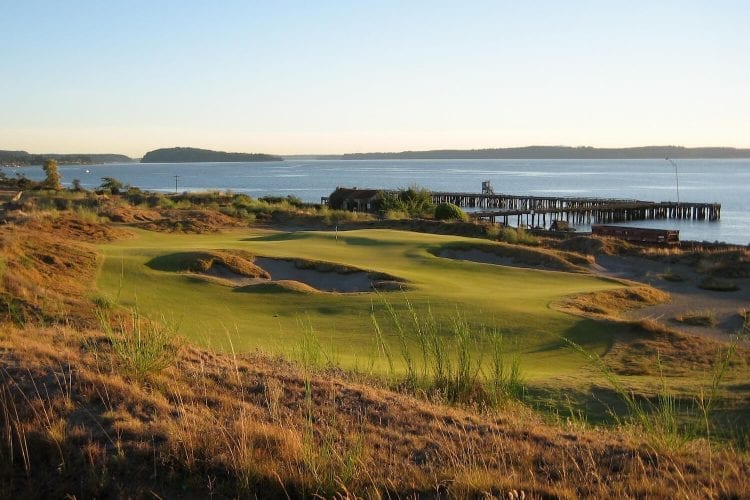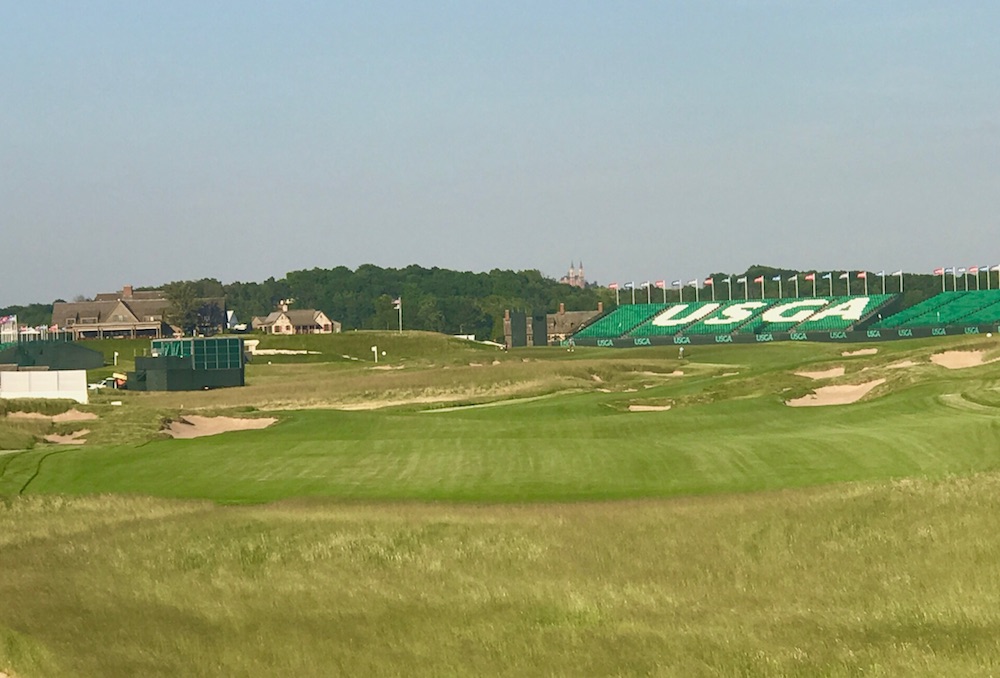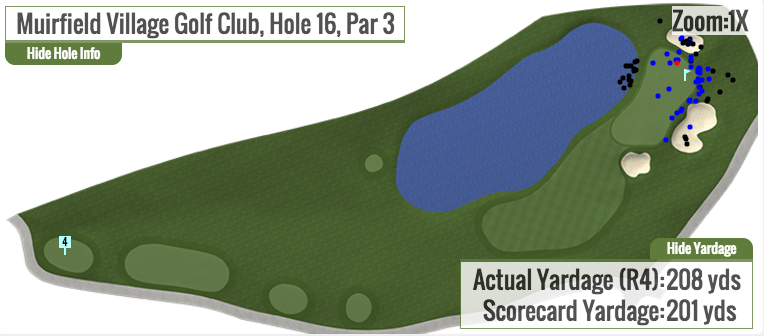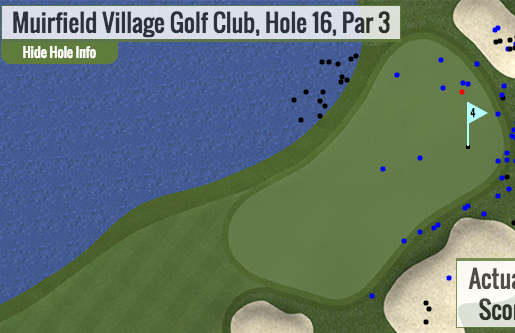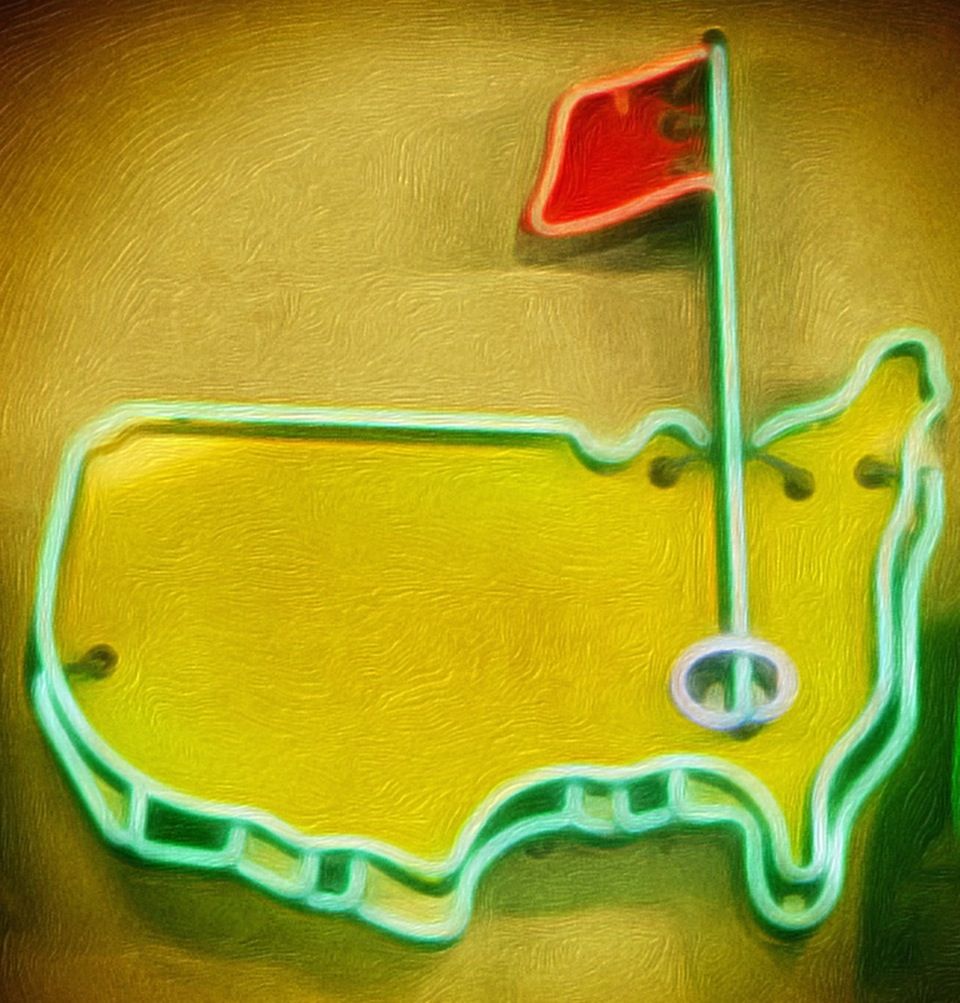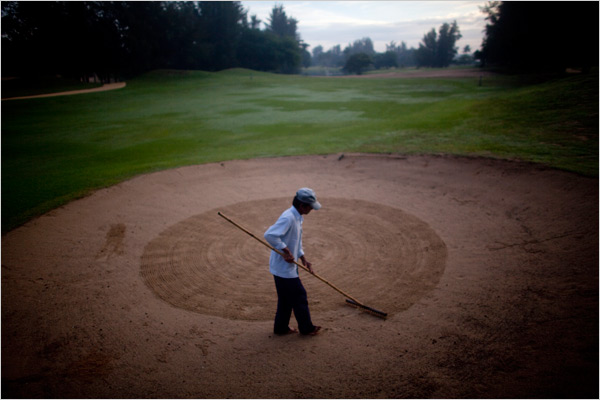Cara Robinson and I summed up the Justin Rose/course setup comments on Morning Drive today if you want the quick version.
However, the subject is worth delving into on multiple fronts:
A) how setup effects matches
B) the entertainment side
C) how hole locations are used to thwart distance
 We knew from 2012 post-mortems that Team USA lamented a 17th hole pin placement that favored Europe. So this time around the task force Task Force "Task Force" 2016 Ryder Cup winning-TASK FORCE set parameters (low rough, fast greens) and left the rest to the PGA of America's Kerry Haigh.
We knew from 2012 post-mortems that Team USA lamented a 17th hole pin placement that favored Europe. So this time around the task force Task Force "Task Force" 2016 Ryder Cup winning-TASK FORCE set parameters (low rough, fast greens) and left the rest to the PGA of America's Kerry Haigh.
While Hazeltine is strategically no Old Course, it was shocking Sunday to see almost no interesting hole locations. Nearly were all centered and whatever angles of importance there are at Hazeltine were rendered useless.
Rees Jones' par-3 17th features a strange, clumsily-constructed green complex with almost no character, only a few intriguing hole locations and zero interest if it were not set by a lake. Yet, somehow Sunday, the hole location induced zero risk-reward element in flirting with the water.
Justin Rose summed all of this up in his post-round comments:
Setup-wise, this course can be as tough as you want it to be, there's no doubt about it. I think today, I think if we were all to be honest about it, I thought the setup was incredibly weak. I thought it was very much a Pro-Am feel in terms of the pin placements. They were all middle of the green.
I don't quite understand that to be honest with you, world-class players, 12 world-class players here and 12 world-class players here in 30 minutes time, and we want to showcase our skills. We want to be tested. For example, the water holes out there, all the pins were as far away from the water as possible.
I mean, the pin on 17 is an absolute, you know, a joke. It's a 9-iron into the middle of the green and you stiff it. So with a match on the line, you kind of feel like you want to have something -- you want a player to step up a little bit more than they have to.
Even 18, if you hit a good drive down there, you've got a wedge into the green, and if you hit a wedge to the middle of the green, you're within 12-foot of the pin. So I just felt coming down the stretch, it was a little soft.
Some saw this as sour grapes, but Rose seemed to be speaking as a veteran of match play who understands what kind of dynamics might be introduced when the course is a third element.
Rory McIlroy is quoted by GolfDigest.com's Brian Wacker as lamenting the hole locations when combined with this week's low rough, but McIlroy also ultimately chalks up the situation to home field advantage.
“Bad tee shots weren’t getting punished as much as maybe they should have been."
Rickie Fowler, who beat Rose Sunday, defended the setup when asked.
Q. In the European presser a few minutes ago, Justin Rose said that he -- he was very critical of the setup. He said it was weak and considered it to be similar to a Pro-Am. Your thoughts on that? Did you sense that from him? What were your thoughts on the setup?
PHIL MICKELSON: (Laughing).
RICKIE FOWLER: The setup was, I don't think it was easy by any means. Him and I didn't play as well as we would have liked to. We didn't make many birdies on both sides. I felt like it was an even match between the two of us. Obviously, as you could see, no one was ever more than 1-up.
It was easier for some; this guy next to me (turning to Phil) he made a few birdies. He's been playing well all week. I wouldn't say that the setup was easy, by any means.
I thought that the PGA did well all week, Kerry Haigh and the staff. Depending on whether it be a foursomes or a fourball match and then into singles, they did a good job preparing the golf course, getting it in the right condition and with where the hole locations were.
Obviously when it comes down to singles, it's fair. Everyone's playing the same ones. So I thought it was a good setup today and it worked out just fine for us.
And there is the Ryder Cup course setup conundrum. Whether it's the Golf Gods, karma or just simple overanalysis, getting cute with setup can be unproductive. Try to do too much--the USA has tried the high-rough, narrow fairway approach too--it backfires.
Erring on the side of too little means taking the setup role and some strategy out of the equation, which seems like a better way to go than trying to be clever.
On the entertainment front, players were allowed to make a ton of birdies, exciting for fans and interesting to watch on TV. This is, after all, an exhibition. We were entertained. And unlike in a penal setup, players were winning holes through their play and rarely by the mistakes of their opponent. Easier and more shallow it may be, but also more rewarding to watch.
Finally, and this is in no way to detract from the 63s that Sergio and Phil would have posted in their 19-birdie battle Sunday, but we got to see with a round of golf featuring a bunch of "pro-am" pins on immaculate greens, today's players can render a course harmless. It was a reminder of just how much tucked hole locations are used not to offset distance gains.
So the Ryder Cup proved entertaining because we got to see what today's players could do on a once-massively difficult course without facing pin placements designed to prevent birdies.


